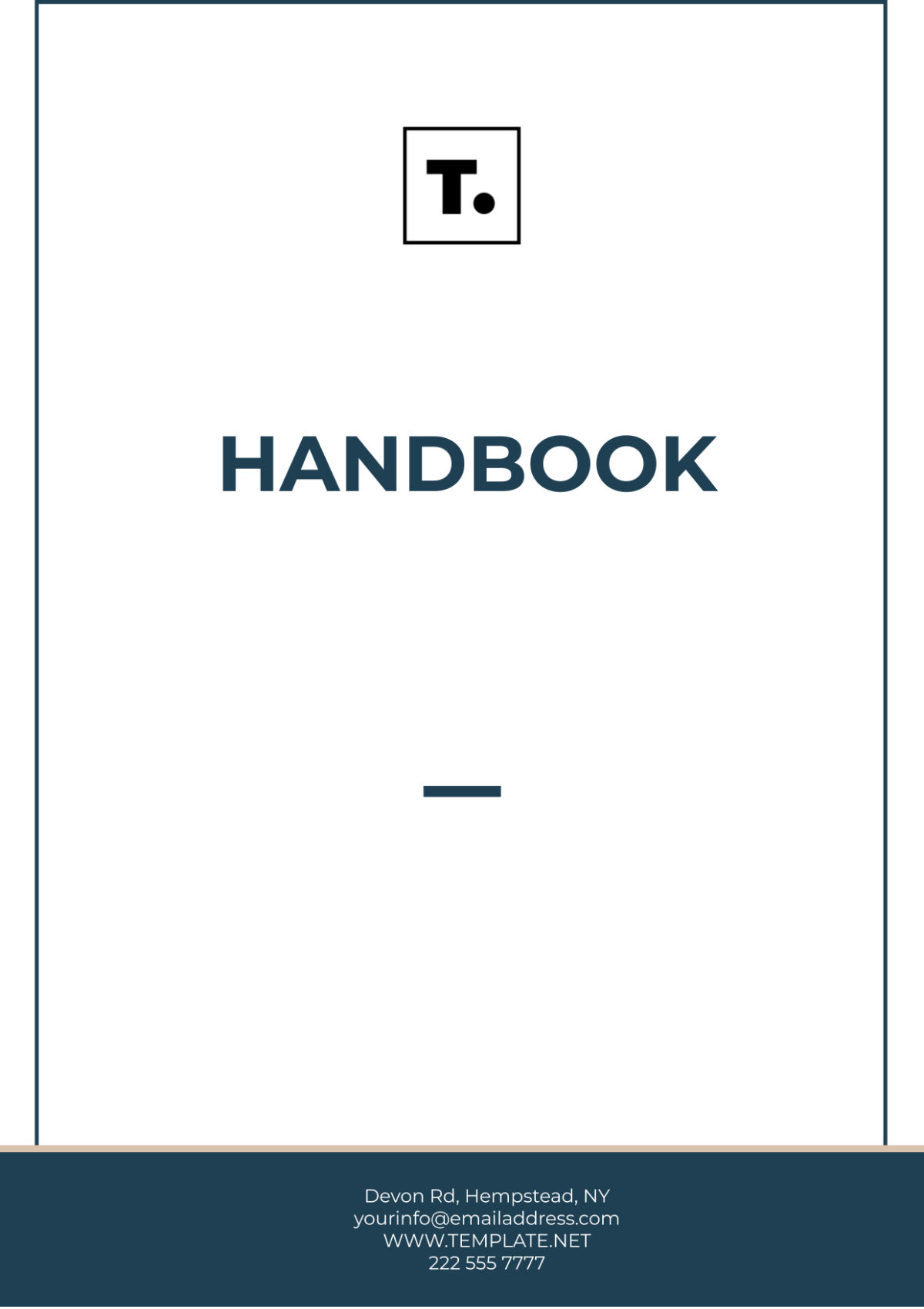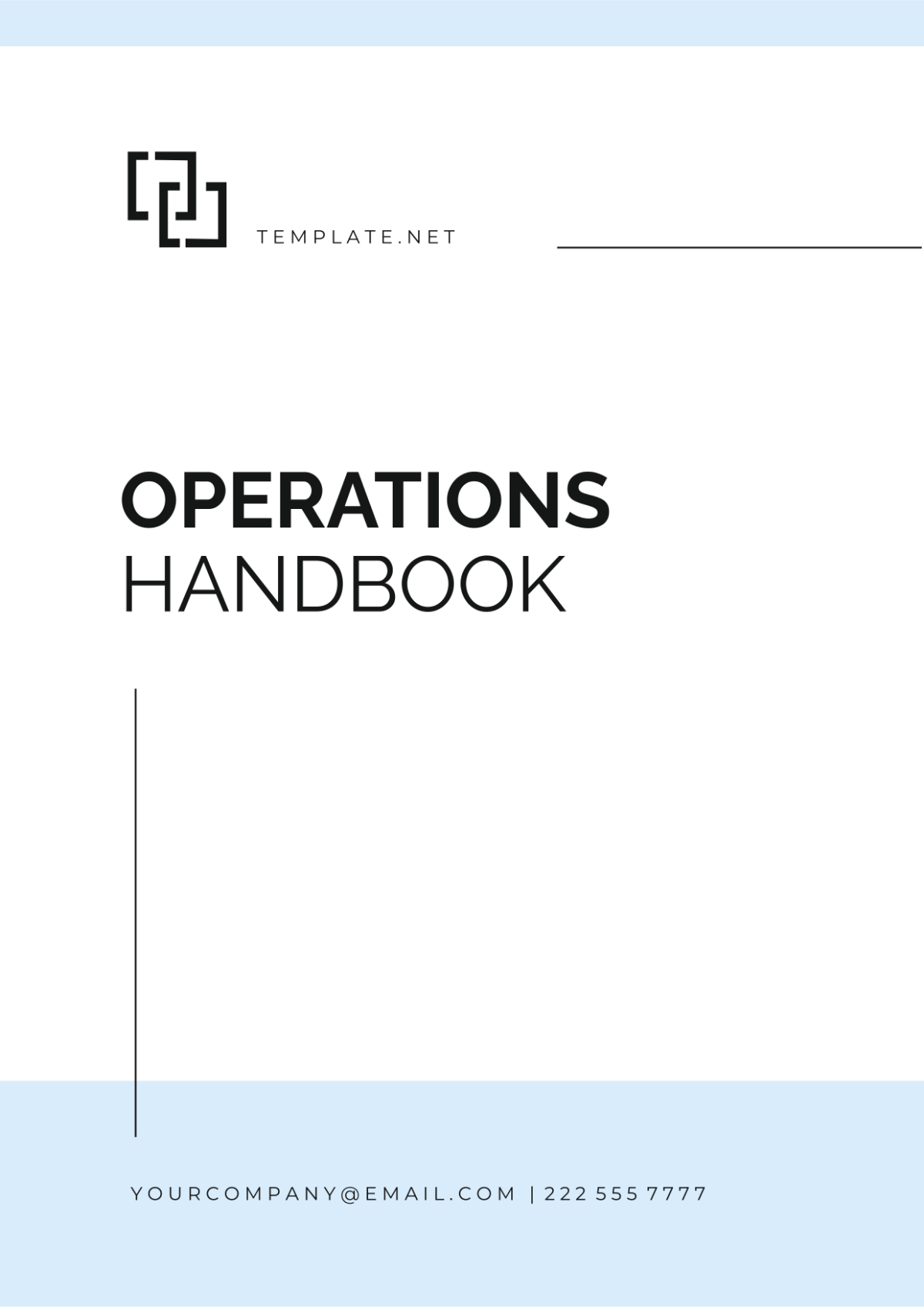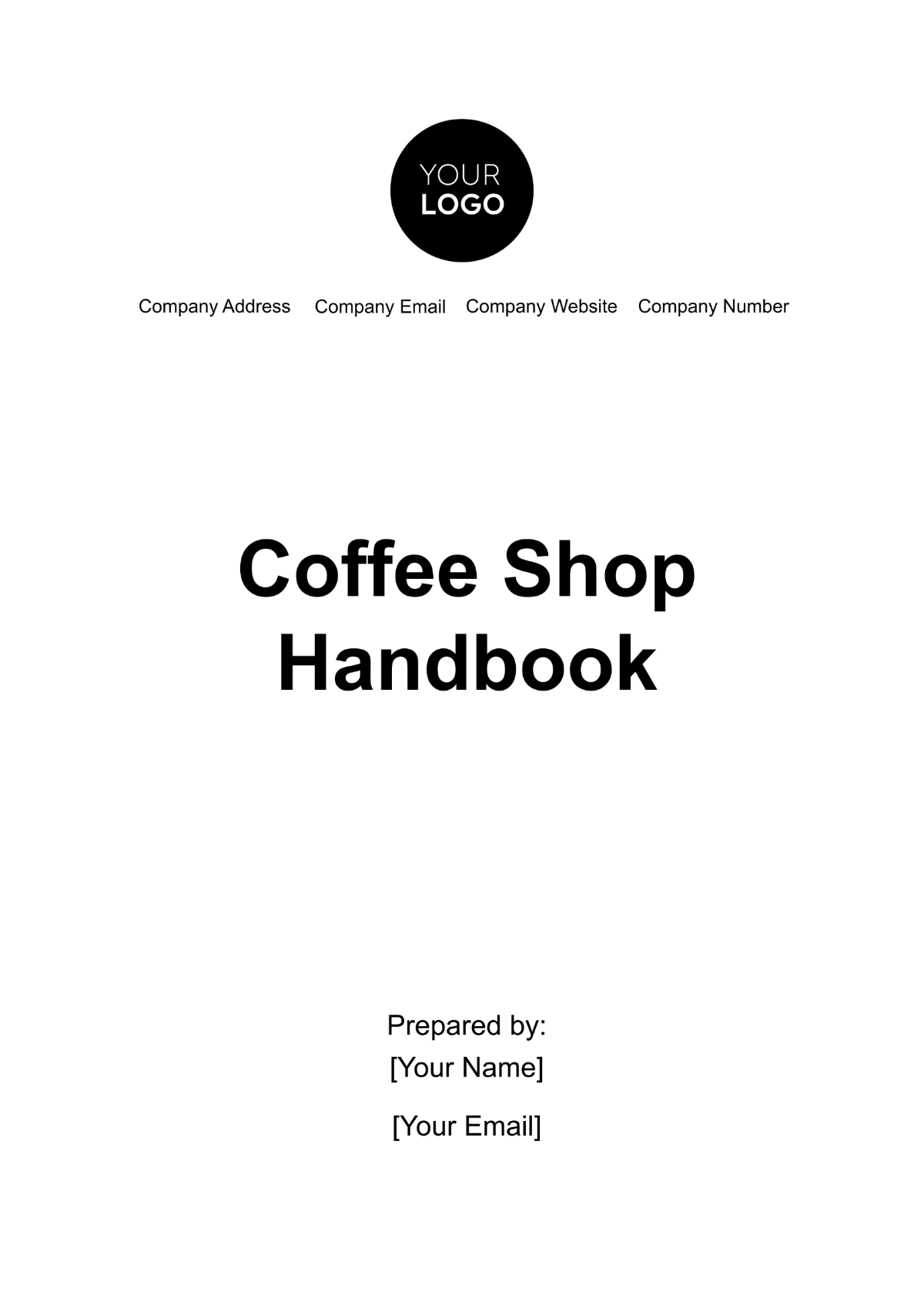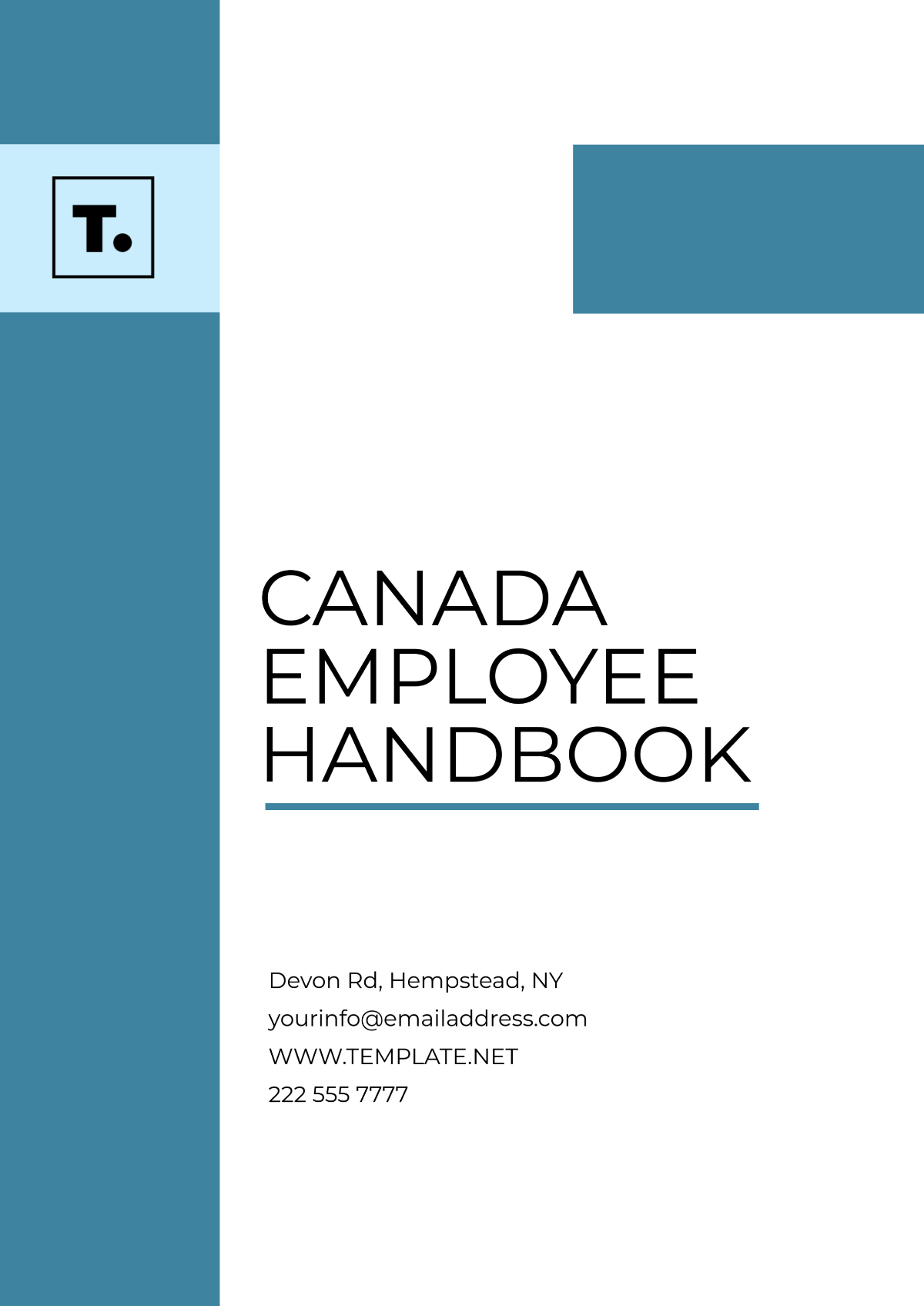Free Health & SafetySafety Handbook Template
Health & Safety Handbook
I. Introduction
Welcome to the [Your Company Name] Health & Safety Handbook. This document is designed to provide our employees with essential information on maintaining a safe and healthy work environment. At [Your Company Name], we are committed to ensuring the well-being of our employees, clients, and visitors by adhering to industry best practices and legal requirements. Our goal is to foster a workplace where safety and health are prioritized, and where every team member is equipped with the knowledge and resources necessary to contribute to a secure working environment.
Safety is a shared responsibility, and each of us plays a crucial role in identifying and mitigating potential hazards. This handbook outlines our safety policies, emergency procedures, and preventive measures to address common workplace risks. By familiarizing yourself with these guidelines, you are not only protecting yourself but also helping to create a culture of safety within our organization. We encourage you to review this handbook regularly and to reach out to our Safety Officer with any questions or concerns. Together, we can ensure a safe, productive, and supportive workplace for everyone at [Your Company Name].
II. General Guidelines
To ensure a safe and healthy work environment at [Your Company Name], it is crucial to adhere to the following general guidelines:
Always Follow Company Safety Procedures
Compliance with established safety procedures is essential to preventing accidents and injuries. These procedures are designed to protect both you and your colleagues by addressing potential hazards specific to our workplace. Familiarize yourself with the safety protocols related to your role, and ensure you follow them diligently. This includes understanding the proper use of equipment, handling of materials, and execution of tasks in a safe manner.
Report Any Unsafe Conditions to Your Supervisor Immediately
If you encounter any unsafe conditions or potential hazards, it is your responsibility to report them to your supervisor as soon as possible. Timely reporting allows for prompt corrective actions, which can prevent accidents and ensure a safer work environment for everyone. Unsafe conditions might include faulty equipment, spills, or any other situation that poses a risk. Your proactive approach in reporting these issues helps maintain a safe workplace.
Wear Appropriate Personal Protective Equipment (PPE)
Personal protective equipment (PPE) is essential in minimizing exposure to workplace hazards. Depending on your role and tasks, this may include items such as safety goggles, gloves, helmets, or hearing protection. Always wear the appropriate PPE as specified for your job and ensure it is in good condition. Proper use of PPE is a critical aspect of protecting your health and safety.
Maintain a Clean and Organized Work Area
A clean and organized work area reduces the risk of accidents and improves overall safety. Keep your workspace tidy and free from clutter, which can be a tripping hazard or obstruct access to emergency equipment. Proper storage of materials and regular cleaning of spills are essential practices for maintaining a safe work environment.
Attend All Mandatory Safety Training Sessions
Participation in safety training sessions is required for all employees. These sessions provide valuable information on current safety practices, emergency procedures, and new regulations. Attending these trainings ensures that you are well-informed about safety protocols and are prepared to handle potential emergencies effectively.
III. Emergency Procedures
In the event of an emergency at [Your Company Name], it is vital to act swiftly and efficiently to ensure your safety and the safety of those around you. Follow these steps to manage the situation effectively:
Stay Calm and Do Not Panic
Keeping calm is essential during an emergency. Panicking can hinder your ability to make clear decisions and respond effectively. Take deep breaths and focus on the actions you need to take to ensure your safety and the safety of others.
Follow the Evacuation Plan Posted in Your Work Area
Each work area at [Your Company Name] has an evacuation plan clearly posted. Familiarize yourself with the layout and evacuation routes before an emergency arises. In case of an evacuation, follow the designated routes to exit the building quickly and safely. Do not use elevators during a fire or other emergencies, as they may become inoperative or unsafe.
Call Emergency Services and Provide Them with Necessary Information
Once you are in a safe location, call emergency services by dialing 911. Provide them with accurate information about the nature of the emergency, your location, and any specific details that might help responders, such as the number of people involved or the presence of hazardous materials. Clear and precise information can significantly aid in a quick and effective response.
Assist Others in Evacuating, If It Is Safe to Do So
If you can do so without jeopardizing your own safety, assist colleagues and visitors in evacuating the premises. Help those who may need additional support, such as individuals with disabilities or those who are unfamiliar with the evacuation routes. Your assistance can make a critical difference in ensuring everyone’s safety.
Report to the Designated Assembly Area and Await Further Instructions
Once you have evacuated the building, proceed to the designated assembly area. This location is predetermined to ensure everyone can be accounted for safely. Wait for further instructions from emergency personnel or your supervisor. Do not re-enter the building until it has been declared safe by authorized personnel.
IV. Reporting Incidents
At [Your Company Name], it is crucial to report all incidents, regardless of their severity. Reporting even minor incidents helps identify potential hazards and prevents future occurrences. To ensure a comprehensive and effective reporting process, follow these steps:
Inform Your Immediate Supervisor About the Incident
The first step in reporting an incident is to notify your immediate supervisor as soon as possible. Promptly informing your supervisor allows for immediate assessment and response, which may include securing the area or providing first aid if necessary. Your supervisor will also be able to guide you through the next steps in the reporting process.
Fill Out an Incident Report Form
Complete an incident report form to formally document the event. This form captures essential details such as the nature of the incident, individuals involved, and any immediate actions taken. Accurate completion of the form ensures that all pertinent information is recorded, facilitating a thorough investigation and follow-up.
Provide a Detailed Description of the Incident
When filling out the incident report, provide a comprehensive description of what occurred. Include specific details such as the date, time, and location of the incident. Describe the sequence of events leading up to and following the incident, as well as any contributing factors. Additionally, note any injuries sustained, property damage, or disruptions caused by the incident. A detailed account helps in understanding the circumstances and in implementing corrective measures.
Submit the Report to the Health & Safety Office
Once the incident report form is completed, submit it to the Health & Safety Office. This office is responsible for reviewing incident reports, investigating causes, and implementing preventive measures. Timely submission of the report ensures that the incident is documented and addressed promptly, allowing for improvements to safety protocols and procedures.
V. Personal Safety
Ensuring personal safety is fundamental to maintaining a secure and productive work environment at [Your Company Name]. This section provides essential safety tips to help you manage common workplace hazards effectively. By following these guidelines, you can reduce the risk of accidents and injuries, contributing to a safer and healthier workplace for everyone. Below is a table outlining specific safety concerns and practical tips to address them.
Concern | Safety Tip |
|---|---|
Slips, Trips, and Falls | Wear non-slip shoes and keep walkways clear. |
Manual Handling | Use correct lifting techniques and ask for assistance if needed. |
Fire Safety | Know the location of fire extinguishers and exits. |
Chemical Safety | Store chemicals safely and use proper protective equipment. |
By adhering to these safety tips, you actively contribute to minimizing risks associated with common hazards in the workplace. Remember, your commitment to personal safety not only protects you but also supports a culture of safety at [Your Company Name]. Stay vigilant and follow these practices to ensure a secure working environment.
VI. Workplace Hazards
Identifying and addressing workplace hazards is crucial to maintaining a safe environment at [Your Company Name]. Here are key practices to manage and mitigate potential risks:
Identify Potential Hazards in Your Work Area
Regularly inspect your work area for potential hazards. These may include unsafe equipment, obstructed walkways, or areas prone to spills. By proactively identifying risks, you can take steps to address them before they lead to accidents. Familiarize yourself with the specific hazards associated with your job tasks and work environment.
Follow Safety Data Sheets (SDS) for Handling Hazardous Materials
Safety Data Sheets (SDS) provide critical information on the safe handling, storage, and disposal of hazardous materials. Always review the SDS for any chemicals or materials you work with. Adhering to the guidelines outlined in these sheets helps prevent exposure to harmful substances and reduces the risk of accidents.
Report Any Observed Hazards to Your Supervisor Immediately
If you encounter any hazards, report them to your supervisor without delay. Prompt reporting allows for timely intervention and corrective action to mitigate risks. This includes both immediate hazards, such as spills or faulty equipment, and potential long-term issues that may affect workplace safety.
Participate in Hazard Communication Training Sessions
Engage in hazard communication training sessions to stay informed about best practices for managing workplace hazards. These sessions provide valuable information on recognizing, evaluating, and controlling risks. Regular participation in training ensures you are up-to-date with current safety procedures and regulatory requirements.
VII. Health Policies
At [Your Company Name], we are dedicated to fostering a healthy work environment that supports the well-being of our employees. Our health policies are designed to promote a culture of wellness and ensure that everyone has access to resources that contribute to their overall health. Below are key aspects of our health policies:
Encouraging Regular Breaks to Prevent Fatigue
To help prevent burnout and maintain productivity, we encourage employees to take regular breaks throughout their workday. Scheduled breaks allow you to rest and recharge, which can improve focus, reduce stress, and enhance overall job performance. We recommend short breaks every hour and longer breaks for meals to ensure you remain alert and energized throughout the day.
Providing Access to Health and Wellness Programs
We offer a variety of health and wellness programs designed to support your physical and mental well-being. These programs may include fitness classes, stress management workshops, and access to counseling services. Participation in these programs is encouraged, as they provide valuable tools and support for maintaining a healthy lifestyle both at work and at home.
Ensuring a Smoke-Free Workplace
To promote a healthier environment and reduce the risks associated with smoking, [Your Company Name] maintains a smoke-free workplace. Smoking is prohibited inside all company facilities and within designated areas to protect employees from secondhand smoke and to maintain a clean, safe work environment. We also offer resources and support for employees who wish to quit smoking.
Offering Vaccinations and Regular Health Screenings
We provide access to vaccinations and regular health screenings to help prevent the spread of illnesses and to monitor your health. These services may include flu shots, COVID-19 vaccinations, and routine health check-ups. Regular screenings help in early detection of potential health issues and contribute to maintaining a healthy workforce.
The [Your Company Name] Health & Safety Handbook serves as a vital resource for ensuring a secure and healthy work environment. By understanding and adhering to the guidelines and policies outlined, you play a crucial role in maintaining workplace safety and well-being. We encourage you to review this handbook regularly, participate in training sessions, and report any concerns promptly. Your commitment to these practices helps us create a safer and more supportive workplace for everyone. Should you have any questions or need further assistance, please reach out to our Health & Safety Office. Together, we can uphold a culture of safety and health at [Your Company Name].

















































